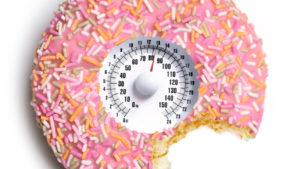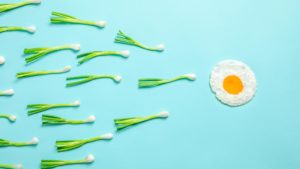
Poor old sugar. It’s not easy being public (health) enemy number one. But despite all these damning reports, as a country we are still eating too much sugar, and it’s easy to see why when you consider the fast pace of modern life.
The NHS advises that “added sugar”, such as table sugar, honey and syrups, should not make up more than 5% of the total energy intake. 30g a day for anyone aged 11 and older. But a National Diet and Nutrition Survey revealed that we are eating far more than this. Teenage children eat up to 14% of their diet as added sugar. There are many implications of a diet high in sugar – but perhaps the most worrying is Type 2 Diabetes (T2D).
In 2025, it is estimated that five million people will have diabetes in the UK (Diabetes UK figures). That is a big number, and though your personal genetics and other health factors can increase your risks. It’s particularly important to consider that the progression of Type 2 Diabetes is largely impacted by our lifestyle and what we eat.
Genetic info
If you want to get an idea of whether your genetics place you at typical or increased likelihood of developing the condition, then consumer genetics company, 23andMe, has recently developed a report within its Health + Ancestry service, to help its customers understand that likelihood and educate them on how to reduce your chances of developing the disease. This is important because, while genetics stay with you your whole life, diet and lifestyle are factors you can manage. This may help prevent type 2 diabetes from developing in the first place.
Avoid these sugar bombs
When it comes to mitigating our chances of developing the condition, watching your diet and making healthy lifestyle choices should be top of the list – but it’s not as easy as you might think. Cutting out sugar is one easy way to better manage one’s diet. Sugar in our food is quickly absorbed into the body and transported into our blood stream, causing our blood sugar to increase rapidly. This happens more quickly when we consume sugar in its purest form. Consider the white stuff we add to our tea, or sprinkle over our cereal. While this type of sugar is the biggest culprit, and is far more obvious to spot and control, there are foods we consume on a daily basis that also contain added sugars. These are the sugars lurking in our meals, or the ‘healthy snacks’ we buy, thinking we’re being healthy.
To help navigate this, here’s a round-up the top eight hidden sugars you maybe consuming without realising:
Cereal
Don’t be mis-lead by the label, most healthy or ‘balanced’ breakfast cereals tend to be refined, white carbohydrate heavy and normally contain added sugar and we often pair it with fruit, sweet yoghurts or drizzle over honey, which can equate to around 11g of sugar in on bowl or more…not an ideal start to the day!
Fruit juices
Fruit is of course healthy, but it does also contain sugar. The problem with juice is that contains no fibre, and is essentially just sugar and water with vitamins and minerals. A small 150ml glass of orange juice can contain 13g of sugar – that’s around three teaspoons!
Shop-bought breakfast smoothies
Smoothies can be done well, but shop bought ones rarely set a good example and are normally very fruit heavy. A typical smoothie can contain way more fruit than you’d ever eat in one sitting, which is too much for your body to process all at once.
Cocktails
We all love mojito or a passion fruit martini in a trendy new cocktail bar, but beware, the more sugary beverages can contain up to 37g! Similarly, while soda water has no sugar, tonic can often be sugar laden, with 14g per 200ml in popular brands.
Low fat yoghurts
Don’t be confused by labels – if something is low fat it may have fewer calories, but it also tends to contain more sugar to help make it taste better. A typical low-fat yoghurt contains 14g of sugar, which is 2 teaspoons.
Dried fruit
Are ‘healthier’ and natural sugars less risky? The answer is that not really – and no matter how you consume it and in what form, eating too much can raise your diabetes risk. Dried fruit is up to 70% sugar, and you can often eat a lot more than dried apricots than you can fresh, so be careful whilst mindlessly snacking at your desk.
Healthy snacks bars
There are exceptions to the rule on these, but be careful and check the label properly. Those that use brown rice syrup, dates, fruit sugars are less processed. But if the total sugar level is too high then this is still a problem. Aim for less than 15g/100g sugar, and ideally more than 10g/100g protein, as this will help to slow the rate the sugar is absorbed into the blood stream.
BBQ meats
Meat is naturally void of sugar, but that doesn’t mean the BBQ is a safe place. Meats, prawns and fish can often be marinated in super sweet sauces to help them stay tender and stick on the inside but char up nicely on the outside. These sauces can be 30% or more. Jam, baked beans, sweet chilli dipping sauces and are other common sugary sauce offenders to watch out for.
National wellbeing has dipped to the lowest levels since records began. But, no matter where we’re at, we can rebuild our mental and physical fortitude. One way […]
Whilst some couples will have no problems falling pregnant naturally, according to the latest NHS statistics approximately one third of couples will struggle to conceive due to […]



